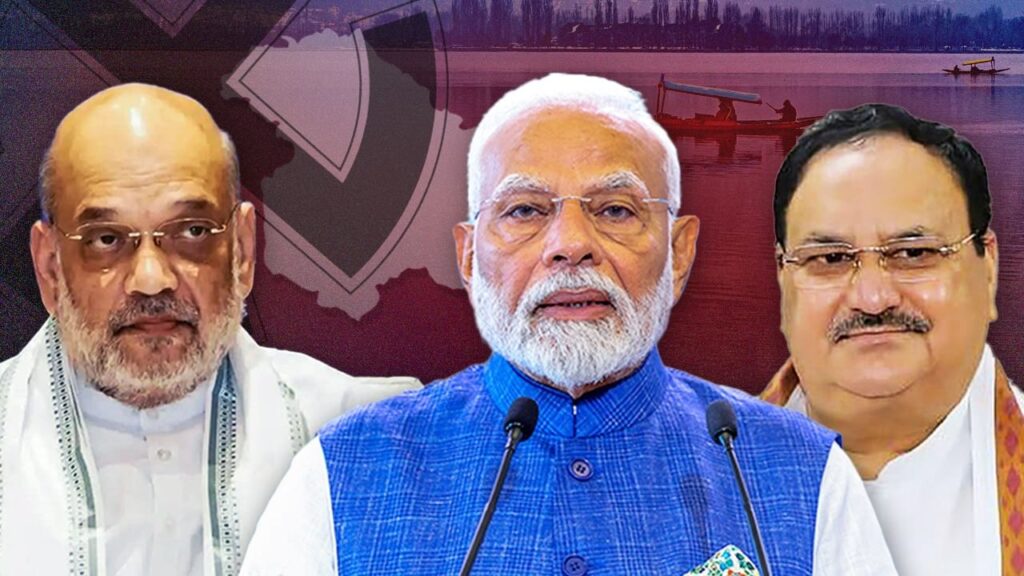After a decade, Jammu and Kashmir is preparing for assembly elections, with changed circumstances and equations. In 2014, the state was still referred to as a state with 87 assembly seats. However, it has now transformed into a Union Territory, increasing the assembly seats to 90. The outcome of the elections will reveal which political party benefits from the evolving atmosphere in the valley. Currently, the contest seems intriguing, taking on a triangular shape. The alliance between the Congress and the National Conference (NC) faces competition from the BJP and the People’s Democratic Party (PDP). With the weakening of the Congress, the battles have predominantly been between the NC and PDP. Nonetheless, the BJP has seen a gradual increase in its influence, now aspiring to secure power independently.
If the BJP’s dream realizes, it would mark its first chief minister in the region. Several factors could contribute to making this dream a reality, so let’s delve into those details.
Voting Rights for Nominated Legislators
According to the Jammu and Kashmir Reorganization (Amendment) Act, 2023, the Lieutenant Governor (LG) can nominate a maximum of two members from the Kashmiri migratory community to the assembly. Among these nominees, at least one must be a woman. The LG also has the authority to nominate a member representing displaced individuals from Pakistan-occupied Jammu and Kashmir to the assembly. This brings the total to three nominated seats, in addition to the previously established two women legislator nominations.
The effective number of seats in the Jammu and Kashmir assembly thus becomes 95, incorporating five additional nominated members who will have the right to vote. This is a significant change, as previously, nominated members had no voting rights in the assembly. This alteration could lead to considerable shifts in Jammu-Kashmir’s electoral landscape, potentially benefiting the BJP.
Distribution of Seats in Jammu Region
Out of the six assembly seats in the Jammu region, only one is predominantly Muslim—located in the Chenab Valley. The Jammu region is viewed as BJP’s stronghold. The Muslim-majority areas of Pir Panjal and Chenab Valley have been altered to maximize the Hindu-majority constituencies. The Udhampur district of Jammu possesses three assembly constituencies. Many villages and panchayats (Dudu, Jakher, Sira, Pattan Gad, Barmain, and Satyalta) from the Chenani assembly constituency have been relocated to the Ramnagar assembly constituency, despite their geographical disconnection. These villages are surrounded by Chenani and have a significant Scheduled Caste population.
Previously, assembly seats for Scheduled Castes (SC) candidates were reserved on a rotational basis. As the Chenani assembly seat completed its 25-year tenure, there were proposals for it to be transferred to Ramnagar, as suggested in the delimitation report. A similar situation pertains to the Jakheni village.
The Impact of Scheduled Tribes (ST) Factor
The Scheduled Tribes (ST) category will play a crucial role in the elections across the Pir Panjal belt. For the Jammu and Kashmir assembly elections, nine seats are reserved for the ST category, five of which are located in the twin border districts of Rajouri and Poonch. The reserved seats include Rajouri, Darhal, Thanamandi (Rajouri), Surankote, Mendhar (Poonch), Mahor (Reasi), Kokernag (Anantnag), Kangan (Ganderbal), and Gurez (Bandipora).
Rajouri and Poonch districts have a 36% traditional population of Gujjars and Bakerwals. The remaining population consists of both Muslims and Hindus. In Poonch district, about 10% of the population comprises Hindus and Sikhs, predominantly concentrated in Poonch city and similar towns, whereas the rural regions are mainly inhabited by Muslims, comprising scheduled tribes and hill people.
Strategic Electoral Changes in Rajouri
In the past, Rajouri comprised four assembly constituencies: Nowshera, Kalakot, Rajouri, and Darhal. The delimitation proposal has introduced a new constituency, Thanamandi. Nowshera is a Hindu-majority constituency, while two general assembly constituencies also have a substantial Hindu voter presence. Kalakot constituency has 51% Muslim population, with the majority of Muslim panchayats being scheduled tribes. Surankote, meanwhile, is 86% Hindu.
Conclusion
The forthcoming assembly elections in Jammu and Kashmir are set to be a defining moment for the political landscape, especially for the BJP. Strategically planned redistricting and the introduction of nominated members with voting rights could have significant implications for the party’s electoral prospects. Understanding these dynamics will be essential for predicting the outcome and gauging the power balance in the region post-elections.
